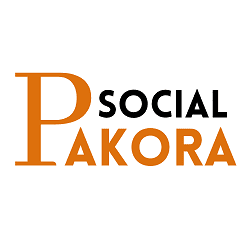TikTok Introduces New Text Feature to Compete with Twitter. In the ever-evolving landscape of social media platforms, competition is fierce as giants continuously strive to innovate and capture the attention of users.
In a surprising move, TikTok, the wildly popular short-form video app, has recently introduced a new text feature to compete with Twitter, a microblogging platform known for its text-based content.
With this new addition, TikTok aims to expand its capabilities beyond videos and offer users a new way to express themselves and connect with their audience.
TikTok Introduces New Text Feature to Compete with Twitter
In this article, we will delve into TikTok’s foray into text-based content, its potential impact on the platform, and how it stacks up against Twitter in the battle for user engagement.
TikTok’s Journey to Dominance
TikTok burst onto the social media scene in 2016 and quickly became a global sensation. The platform allows users to create short videos set to music, adding effects, filters, and creative elements to engage their audience.
With its user-friendly interface and algorithmic content recommendation system, TikTok swiftly gained immense popularity, particularly among the younger generation.
Twitter’s Legacy in Microblogging
In contrast to TikTok’s video-centric approach, Twitter has solidified its position as a microblogging platform since its inception in 2006.
Twitter’s defining feature is its 280-character limit per tweet, encouraging users to express their thoughts and ideas concisely.
As a platform known for real-time updates, news, and viral trends, Twitter has attracted a diverse user base, including celebrities, politicians, journalists, and everyday individuals.
TikTok’s Text Feature: Expanding the Creative Horizons
With the introduction of the new text feature, TikTok aims to diversify its content offerings and tap into the world of text-based communication.
The feature allows users to create text-based posts that appear alongside their videos. Users can choose from a selection of font styles, colors, and backgrounds to customize their text posts, enhancing the visual appeal of their content.
A Battle of Engagement
With TikTok’s venture into text-based content, a natural question arises: how does it stack up against Twitter’s microblogging legacy in terms of engagement? The answer lies in the distinct nature of the two platforms and the preferences of their user bases.
Twitter’s strength lies in its real-time updates and the ability to facilitate conversations on trending topics through hashtags and replies. Twitter’s users are accustomed to sharing concise thoughts, opinions, and news updates within the character limit, leading to a fast-paced, information-driven environment.
The Potential Impact on Content Creators
For content creators on TikTok, the introduction of text posts opens up new opportunities for audience engagement and content experimentation. Creators can now use text to complement their videos, share behind-the-scenes insights, interact with their followers, and convey messages that require more than what a video can offer.
Additionally, text posts can aid content creators in building their brand identity and establishing a unique voice.
By combining visuals and text, creators can create a cohesive and memorable experience for their audience, fostering a stronger connection and loyalty among followers.
The Battle for User Attention
As TikTok ventures into the realm of text-based content, the battle for user attention intensifies among social media platforms. TikTok’s swift rise to dominance has already disrupted the social media landscape, challenging established players like Facebook, Instagram, and Twitter.
With the introduction of the text feature, TikTok demonstrates its willingness to diversify its offerings and keep its audience engaged.
Conclusion
TikTok’s introduction of a new text feature marks a significant step in its journey as a dominant player in the social media landscape.
As the platform expands its capabilities beyond videos and embraces text-based communication, it opens up new opportunities for content creators and enriches the user experience.
Read more about it.

